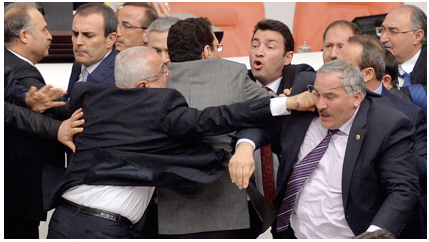THE PLANNING REPORT INTERVIEW--Cecilia Estolano, co-founder of Estolano LeSar Perez Advisors, advises public & private sector clients as well as foundations and urban stakeholders on how to build thriving, healthy and vibrant communities. Prior to this, Estolano both led the city of LA's Community Redevelopment Agency (CRA/LA) and practiced land-use law at Gibson, Dunn and Crutcher. In this TPR interview, Estolano draws on her nationally recognized real estate and community engagement expertise to opine on the City of LA’s historically flawed planning and development process, and to diagnose the current policy landscape in Metro Los Angeles and state that inhibits the production of workforce housing. She also expands upon her personal mission to address inequitable economic development.
"Los Angeles is not a city that actually believes in planning. It doesn't respect community plans ... Comprehensive planning around a district or a community area is what it’s going to take to achieve our sustainability goals in Los Angeles." —Cecilia Estolano
As someone with nearly unequalled experience in inner-city housing and city building, what public policies—accepting the disappearance of redevelopment—are currently depressing the supply of new affordable housing?
Cecilia Estolano: Number one: We need a permanent source of money to help fill the gap for low-income housing, specifically.
Number two: We need a much easier process for doing infill housing. Folks have been talking about this for years; The Planning Report has certainly followed it.
I think one of the most exciting prospects right now is the state legislation that was just approved for accessory dwelling units (ADUs). It’s really the easiest and least painful way to increase our supply of workforce housing, and it might be a way to fill in that middle gap that nobody’s addressing right now.
Why wasn’t the production of more workforce and affordable housing addressed when Community Redevelopment Agencies (CRAs) dominated urban planning and reinvestment?
From the CRA’s perspective, we were trying to get our money out the door for low-income housing. Our mandate was to fill that gap, and we had a fantastic track record: We built something close to 30,000 units over the lifetime of the agency.
But now, with those sources gone, local government—and frankly, state government—have to be a lot more creative about the land-use strategies available to increase the supply of housing in the low-to-moderate-to-workforce levels.
That’s why you see legislation like the ADU bill coming out of the Legislature: because at some point, we have to get local government to move quickly on making it possible to do things like accessory dwelling units.
To the chagrin of affordable housing advocates and developers, much of the housing built in our metropolis since the 2008 economic collapse has been high-rise and expensive. What explains the paucity of affordable housing being built since CRAs were dissolved?
It’s expensive to build in California, so if there are no subsidies and no mandate to build workforce or affordable housing, the market will go to high-end housing.
The entitlement process, particularly in the city of Los Angeles, is quite complex, and it requires a lot of predevelopment costs, lawyers, and folks at City Hall to help you lobby to get your project through. That adds a lot of cost, so to get your rate of return from your investors, you’re going to go to the luxury side.
Given the costs of LA’s entitlement process, why, in your opinion, has the city’s uniquely uncertain planning approval process not been reformed to offer more certainty—such as building by-right—to those wishing to build workforce and affordable housing?
Candidly, I don’t think there’s the will among the elected officials in the city of Los Angeles to take that seriously. This is not a city that actually believes in planning. It doesn’t respect community plans.
But Los Angeles is not the only city in the county of Los Angeles. Other cities and jurisdictions can and have led the way in showing how to facilitate the production of workforce-level housing.
I look, in some ways, to the county of Los Angeles. Regional Planning Director Richard Bruckner, and leadership on the Board of Supervisors, are looking at innovative things like getting a few model types of accessory dwelling units preapproved—so that if you used one of these set floor plans, you could get free approvals and not have to go through any kind of discretionary approval process. The county is right on board with trying to make it easier to generate these units.
That’s not the case in the city of Los Angeles, however. The city’s having a very difficult time getting out of the way of this source—notwithstanding Mayor Garcetti’s interest in piloting some of these approaches with the Innovation Team. It’s been unfortunate to watch the city of Los Angeles create roadblocks.
When you were the executive officer of the LA City redevelopment agency and Gail Goldberg was the city’s Director of Planning, you both collaborated to save industrial land and to update the city’s zoning and community plans. What have you learned since then about the challenges of land-use reform in the city of LA?
It’s such a different landscape now.
When Gail proposed updating 10 community plans right out of the gate, we at the redevelopment agency actually provided the funding to ensure that the three plans in South Los Angeles—which had not been updated for 20+ years—would receive the same amount of attention as, say, Hollywood. But that was a different era, when we had more resources and more flexibility in the use of those resources.
There are still tools available for cities to use, but it takes some bold thinking. Some cities have looked at Enhanced Infrastructure Financing Districts or the Community Revitalization Investment Authority as potential sources of funding for things like housing, or even the LA River Revitalization. But I think what we need is a source of money for planning.
Comprehensive planning around a district or a community area is what it’s going to take to achieve our sustainability goals in Los Angeles. In fact, those two tools can be used for this type of planning, which Gail and I were trying to do.
One example of a place where I think we need to apply this kind of thinking is the area right around Union Station. ELP Advisors is working on a feasibility plan for the Park 101 project, which would cap three blocks of the 101 Freeway as it goes through Downtown Los Angeles.
That investment would create an amazing amenity: parkland right in the middle of the city. It would also knit together the Historic Core, the Civic Center, and the largest transportation hub in the region.
As we look at that, we also have to look at other investments going on in the area, including the Union Station Master Plan; the eventual advent of high-speed rail; the Regional Connector; and private investment going on in Chinatown. Altogether, we can see that this is a district that needs to be comprehensively planned.
It might be a great place to implement an Enhanced Infrastructure Financing District. We’re investing a lot in the public realm that will create value for private property owners. We should be able to capture that value and use the proceeds to fund benefits like affordable housing.
Let’s put that EIFD in place now and begin to do integrated planning among the county, the city, Metro, Caltrans—and together, make that one of the most sustainable portions of the region. We could pull that off—but it would require big thinking beyond just little fixes at the level of the corridor or the intersection.
I think people are ready for this vision. There’s interest at Metro, at the county and in the city. People are ready to think big again in Los Angeles, and we finally have some tools to do it. So let’s apply them in a way that addresses our need for housing of all types, new visions of sustainability, and new connections for bike and pedestrian modes of transportation.
This is the place to do it, and it could become a showcase for the region.
Could you elaborate on the contrasting approaches that local jurisdictions other than the city of LA have taken to encourage the building more housing—for example, in Santa Monica, Pasadena, or Culver City?
ELP serves as the executive director of the Westside Cities Council of Governments, so we have familiarity with the work happening in Santa Monica, Culver City, West Hollywood, and Beverly Hills. Those cities have had a very strong commitment to the production of affordable housing.
We went through a planning process with a team at the Westside Cities COG, and found that the No. 1 priority for those cities is to address the issue of homelessness. In a few days, our Board of Directors will get a presentation from the regional representative for the county’s homelessness initiative to see how the Westside cities, as a sub-region, might work to address homelessness issues. Some of those cities are already digging in. They’re working on rapid rehousing and vouchers. They want very practical solutions.
It’s certainly easier to work at a smaller scale than that of the city of Los Angeles, but there’s also a strong commitment to addressing the need for housing at all income scales, and not just at the luxury level.
But let’s also give the city of LA credit—particularly CAO Miguel Santana—in proposing Prop HHH as a way to fund the production of housing to accompany the county’s enhanced services effort. We’ve seen an unprecedented level of coordination and cooperation between the city and county on homelessness. That gives us the best hope for a comprehensive approach than we’ve seen in many years.
What reforms need to happen in the city of LA, in your opinion, to meet and surpass what Santa Monica and West Hollywood are doing to encourage the building of more affordable housing?
It comes down to leadership and building a constituency for support for affordable housing policy. We just haven’t seen that in a consistent way over the last few years.
There have certainly been efforts to address the homelessness issue, but in terms of using any of the tools still available to the city related to affordable housing —even land-use tools—there’s been a pretty laggard response.
There’s also been talk about having a fee associated with new development. But it’s probably the third time in my career that I’ve seen the city of Los Angeles debate this, and I just don’t know what the prospects are for success.
Clearly, a strong commitment to city planning has not interfered with Santa Monica and West Hollywood’s ability to encourage the building of affordable and workforce housing. Some critics have suggested that the motto in the city of LA seems to be: “We don’t need planning; planning gets in the way of building.” What’s your take on this argument?
The issue is: What is your vision for the city? What is your vision for how it will look and what we expect of development in the city?
The cities we’ve mentioned on the Westside have a very clear vision. They have high expectations of the quality of life that they want to achieve and maintain in their cities, and they use planning to do that.
They go through a rigorous process of community planning with deep, extensive community engagement. These are difficult battles at the time. But once that plan has been adopted—precisely because of that rigorous process and community engagement, and because it’s a process that everyone has agreed on—they stick to it. That planning document becomes the guidepost, and city councilmembers defer to it.
That is not at all what happens in the city of Los Angeles. Here, there’s a much more politicized approach. Councilmembers zealously protect the extraordinary discretion that they have over how developments will move forward.
Los Angeles is a city that grew on real-estate speculation. It’s always been a source of quite a bit of power for councilmembers, and they haven’t been willing to give it up.
In an interview with The Planning Report last month, Bill Witte of Related—the largest developer of affordable housing in the region—dismissed the Build Better LA ballot measure, which is touted by labor as a solution to growing the supply and affordable housing. What are your thoughts on this ballot measure?
I think it’s a very Los Angeles approach to force this issue by putting it on the ballot.
It’s interesting to see labor unions—which are probably one of the strongest constituencies outside of developers—come together with some aspects of the business community and the affordable housing community to take this approach.
Certainly, it’s a response to the Neighborhood Integrity Initiative—the potential March ballot measure that would put a two-year moratorium on development in the way the city of Los Angeles does it.
It’s not nuanced. But it’s born out of a sense of desperation that if someone doesn’t move forward with an idea that’s better than zero growth, the council won’t come up with an alternative.
Of course, there’s desperation on both sides. There’s a sense that the city on its own just can’t find ways to use their planning tools effectively, and to respect those tools.
These initiatives are a reaction to generations of dysfunction in Los Angeles. We’ve had the greatest run-up, and one of the greatest real estate builds in the last few years, after one of the greatest crashes. Yet we’ve had no appreciable increase in the amount of affordable or workforce housing—because of complete paralysis by the city council and the mayor.
I am not a proponent of the Neighborhood Integrity Initiative; I think it’s the absolutely wrong approach. But it certainly has focused the mind of the elected officials.
Mayor Garcetti has now proposed banning ex parte communications from the Planning Commission. Sadly, that would not have happened but for the threat of the Neighborhood Integrity Initiative.
Cecilia, if someday you were to seek to be LA’s mayor, what would you do over the course of four years to create a planning process in the city that would bring relief to those who are exasperated?
You’d have to build a broad political movement that could transcend city council boundaries.
You’d have to spend a lot of time building an enduring coalition of labor, affordable housing advocates, and some of the reasonable elements of the development community, and make the case that Los Angeles cannot prosper without a balanced economy and a balanced residential population.
You’d have to outline a plan to construct, not just low-income housing, but workforce housing.
You’d have to combine regulatory reform, entitlement-processing reform, and a genuine community planning process—and it would have to be accelerated. We can’t take 10 or 15 years to do community plan updates; that’s exactly the problem we’re in right now.
I think you have to do all of the updates within five years. Otherwise, there’s no legitimacy to the process.
That may seem like a Herculean and impossible effort. But that is what it will take to tackle this. Otherwise, why would anyone lend any credibility to the city’s commitment to planning?
Before closing: TPR covered community planning and wealth-building in East LA in our last issue. You’ve been working on a bioscience hub in East LA; talk about what motivates you to be involved in this project.
The vision for a bioscience or biomedical hub in the area has been there for at least 15 years. We looked at it when I was at the redevelopment agency. We combined two project areas—the county’s and the city’s—to create it, and then redevelopment went away. But we never lost that commitment.
There’s a clear concentration of uses in the area: the LAC+USC General Hospital, the Keck Medical Center, the USC Health Sciences Campus, Cal State LA, which has a terrific STEM program, and Grifols, which is an international biopharmaceutical company. Those are the makings of what ought to be an industry cluster.
During the recession, while private industry and other sectors were declining, biotech actually gained jobs. It has strength in this region, but it could be stronger. It’s a sector that could grow and create jobs—and more importantly, create an avenue of opportunity for folks on the Eastside.
We partnered with East LA College this year on a program called the Biotech Leaders Academy. We were very fortunate to get an LA2050 challenge grant to fund it. We placed 10 East LA College students in industry internships in the bioscience sector, many in startup companies. We also gave them training on entrepreneurship—what it takes to start a biotech company. This fundamentally transformed these students’ views of their careers and what they could do with the degrees they were attaining.
This is the nuts and bolts of equitable economic development: hitching the economic opportunity of disadvantaged communities to the rising tide of a growing industry from the start.
These companies now see East LA College and Cal State LA as sources of talent. They typically recruit from graduate programs at UCLA, USC, or Caltech. But after the program, employers told us that these students were focused, mature, and motivated—some of the best interns they’ve ever had—and that they would consider taking future interns from East LA College.
That is equitable economic development, and that’s the kind of work we need to continue to do if we want Los Angeles to thrive throughout the region and not just in pockets on the Westside.
(This article was posted originally at the excellent Planning Report. CityWatch is reposting it because The Planning Report does exceptional work and because few things affect the lives of Angelenos or dominate the city conversation as thoroughly and dramatically today as passionately debated planning future of Los Angeles.)
-cw
 Although the DWP certainly needs to be significantly overhauled and reformed, Charter Amendment RRR is a wrongheaded measure. It destroys existing checks and balances and puts residents at risk of rate hikes and shady contracts that will lead to deregulation, without genuine recourse. If we go down the path of deregulation, voters should expect more blackouts and brownouts in addition to greater rate hikes.
Although the DWP certainly needs to be significantly overhauled and reformed, Charter Amendment RRR is a wrongheaded measure. It destroys existing checks and balances and puts residents at risk of rate hikes and shady contracts that will lead to deregulation, without genuine recourse. If we go down the path of deregulation, voters should expect more blackouts and brownouts in addition to greater rate hikes. 

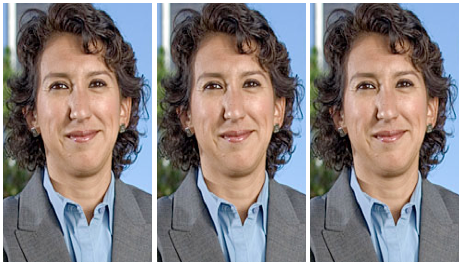


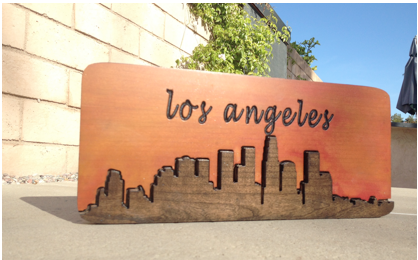

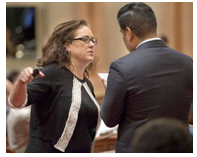 Her rivals: As the lieutenant governor, Gavin Newsom will get much of the blame, even though his influence in that position is less significant than Jerry Brown’s dog,
Her rivals: As the lieutenant governor, Gavin Newsom will get much of the blame, even though his influence in that position is less significant than Jerry Brown’s dog, 


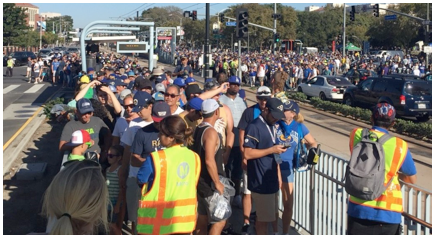

 Goldstein Planting Investments and its representatives also contributed $4,700 to Mayor Eric Garcetti’s 2017 re-election campaign.
Goldstein Planting Investments and its representatives also contributed $4,700 to Mayor Eric Garcetti’s 2017 re-election campaign.

